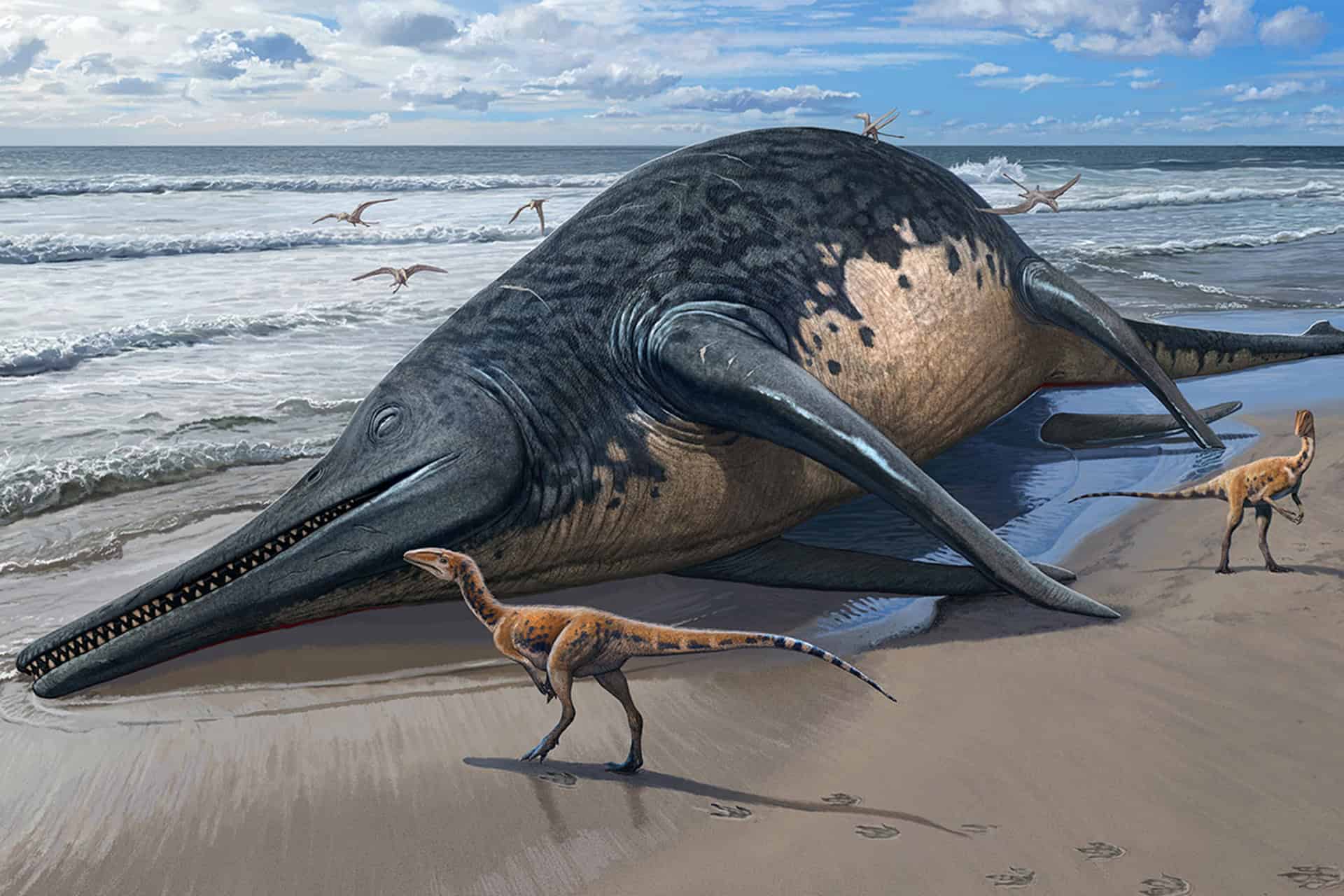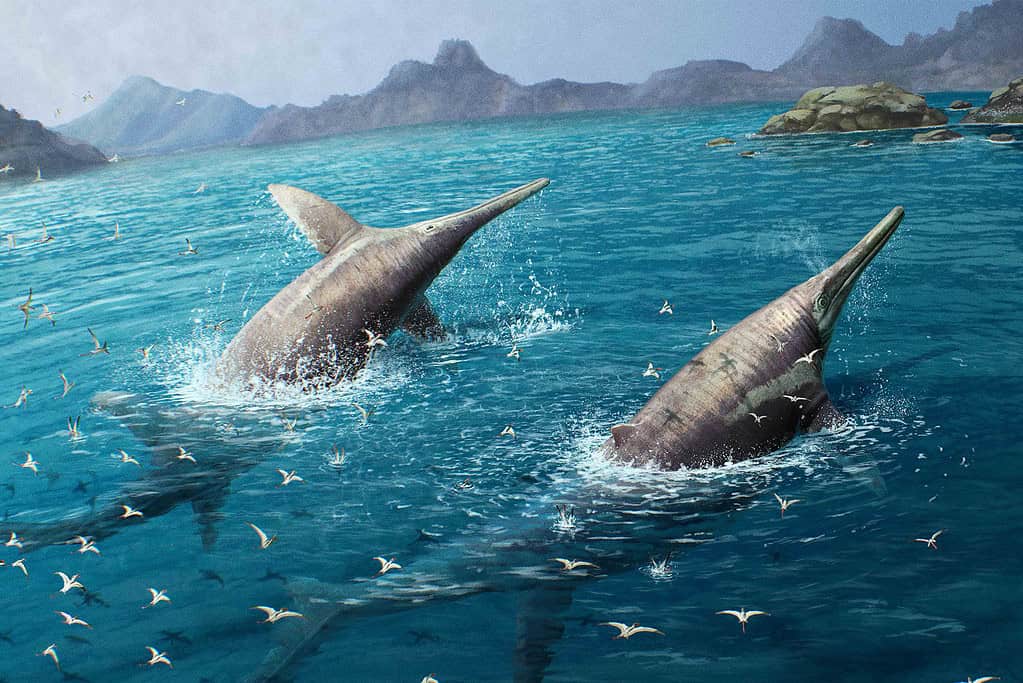
For the last eight years, a team of researchers in the UK has been collecting and studying the remains of two massive jawbones dating back to 202 million years. Their new study reveals that the bones belonged to a previously unknown species of ichthyosaurs, gigantic marine reptiles that ruled the oceans while dinosaurs ruled on land.
Paleontologists around the globe have discovered 100 species of ichthyosaurs so far. However, the newly identified species, Ichthyotitan severnensis, measured 25 meters (82 feet) in length, making it the largest ichthyosaur. It’s the largest marine reptile ever, for that matter.
“It is quite remarkable to think that gigantic, blue whale-sized ichthyosaurs were swimming in the oceans around what was the UK during the Triassic Period,” Dean Lomax, a paleontologist and a research fellow at the University of Bristol, said.
How to tell the size of an ichthyosaur using jawbones

Lomax and his team didn’t discover the two jawbones all at once and had to piece together fragments. Paul de la Salle, a fossil collector found fragments of the first jawbone in 2016 near Lilstock Beach in Somerset, UK. Four years later, Justin and Ruby Reynolds, co-authors of the study, found a piece of a second jawbone around Blue Anchor Beach.
Meanwhile, the researchers were studying the first fossil bone. The final fragment of the second jawbone was unearthed in 2022 from the Westbury Mudstone Formation in Somerset.
“I was amazed by the finding. In 2018, my team studied and described Paul’s giant jawbone and we had hoped that one day another would come to light. This new specimen is more complete, better preserved, and shows that we now have two of these giant bones (called a surangular) that have a unique shape and structure,” Lomax said.
When fossilized fragments of the second jawbone were put together, the bone measured over two meters (~6.5 feet) in length. Since the researchers didn’t have a complete skeleton of I. severnensis, the only way they could estimate its size was to compare its surangulars with those of other giant icthyosaurs.
They measured the dimensions of the jawbones of two other ichthyosaurs; the relatively large Shonisaurus sikanniensis (total body length 21 meters) and the smaller Besanosaurus leptorhynchus (8 meters).
The comparison between the jawbone and known body measurements revealed that “the new species, named Ichthyotitan severnensis, may have been a whopping 25 meters long, or twice the length of a city bus,” the researchers note.
However, since the size estimate is entirely based on bone fragments further research and more complete specimens are required to confirm these findings.
This marine reptile could have been even larger

According to the researchers, all ichthyosaur species went extinct 94 million years ago while the linage of “giant ichthyosaurs” to which I. severnensis belongs disappeared around 200 million years ago during the Triassic-Jurassic extinction. Paleontologists discovered the first ichthyosaur fossil in 1811, and since then, their remains have been found all across the globe.
So far hundreds of ichthyosaur species have been identified, ranging from 0.4 meters to 25 meters in length. The biggest of them all, the newly identified I. severnensis matches the modern-day blue whale in size. However, paleontologists may likely unearth and identify even bigger ichthyosaurs in the future.
This is because when the study authors analyzed the internal structure of the jawbones of I. severnensis, they found that the animal’s body was in a growing phase when it died. This means that 25 meters isn’t the maximum length and ichthyosaurs could have grown even larger. Previously, researchers identified the heaviest animal ever, a massive 39-million-year-old whale with unusually dense bones.
The study is published in the journal PLoS ONE.









